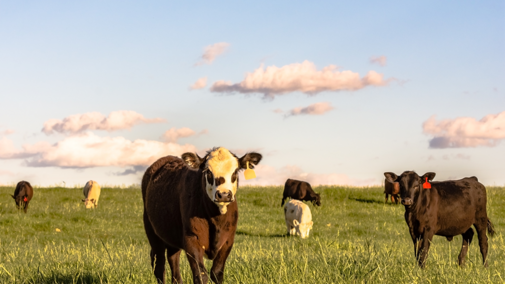Double Cropping Forages
There are many producers looking at looking at ways to grow more forage for hay or pasture. Double cropping annual forages on irrigated cropland can be an option. With timely and adequate moisture, this can also be successful on dryland as well.
Successful double cropping of annual forages requires good planning and timely operations. To use this approach this spring, small grains like oats or spring triticale would need to be planted here in early April. Grazing of these plantings can begin around the third week of May and last until early July if stocked and managed properly.
As soon as this spring planting gets grazed out, the double crop of a summer annual grass like sudangrass or pearl millet can be planted. With adequate moisture, the summer annual grass will be ready to graze in 45-50 days and may last through September.
This double crop forage strategy works even better if winter annual cereals like winter rye, wheat, or triticale were planted last fall for spring forage. They will be ready to graze earlier than any spring planting and like the spring plantings, as portions are grazed out, plant summer annual grasses to begin grazing them by mid-summer.
Another strategy is to plant the summer annual grasses first in mid- to late May. Graze portions of them out in August, then plant oats or turnips or both for late fall and winter grazing.
Of course, adequate moisture or irrigation is needed for these options to produce both double crops. Thus, it is wise to have a nearby pasture where animals can be placed and fed temporarily if extra time is needed to grow sufficient forage for grazing.
Grass Tetany
Fresh spring growth is a welcome sight for producers looking for animal forage. However, lush spring growth may be the perfect condition for a case of grass tetany. While turn out may be a ways off, mitigating this risk starts now.
Grass tetany is the result of low levels of magnesium in an animal’s blood stream. Low magnesium levels in lush, newly growing grass are often a main cause. In lactating animals, low dietary magnesium paired with a drain on calcium from milk production increases risk even more. Calcium aids in magnesium absorption. This means, high milk-producing and older animals are most at risk for developing tetany.
To prevent tetany problems this spring, it’s best to wait until grass in pastures has grown to at least six inches high before grazing. Legumes like alfalfa or clover, are a good source of magnesium, so grazing mixed grass and legume pastures can help balance mineral demands.
While cultural practices can reduce risk, providing correct and adequate mineral supplementation may be the most certain remedy. Cattle should be consuming three to four ounces daily of mineral containing supplemental calcium and 10-13% magnesium oxide. This should start at least 30 days before grazing begins, to ensure proper intake has been established.
Most high magnesium minerals utilize magnesium oxide, which is bitter tasting and can reduce animal consumption. Mix magnesium fortified mineral with salt into a complete package or feed with a highly palatable protein or energy supplement to improve intake.
High magnesium mineral should be provided for animals until cool-season grasses slow down growth and the levels of lush, fresh forage are reduced, around mid-May.
Dealing with grass tetany in the spring doesn’t have to negatively impact your herd. Plan now to adjust grazing management or mineral supplementation for a tetany-free spring.
Wheat Grazing vs. Grain Value
Cereal grains like wheat can be grown for dual purpose (forage and grain) production in central and southern Plains states. Usually, wheat can be grazed without reducing grain yields when animals are removed from fields just prior to the jointing growth stage, when immature wheat heads move up the stems if nutrients and water are not limited. This year’s warmer soil temperatures may cause Nebraska wheat fields to joint two weeks sooner (early April). So, now may be the time for livestock producers short on forage to decide whether to continue grazing cereal fields or remove cattle from fields for future grain production.
This year, wheat grain prices are trending about 14% lower compared to last year, and hay prices are about 10% lower than 2023. So, growers may be placing higher value on wheat as a forage. In some locations where pasture growth is being delayed, wheat or rye graze-out options may provide 45 days or more of alternative grazing while pastures resume growth.
When producers use wheat as a graze-out forage, summer annuals like grain sorghum, millet or forage sorghums can be replanted on those same fields. Whether the cereal plant forages are grazed-out, hayed or harvested as wheatlage, the goal is to timely plant subsequent summer annuals between mid-May to mid-June for optimizing yields. Sorghum target planting dates may extend to later June or possible early July depending on moisture conditions. Later grain sorghum planting dates, though, such as after wheat grain harvest, usually result in yields half as productive compared to earlier sorghum planting.
In western Nebraska, average stocker cattle gains on wheat during May and early June have ranged from 1.5 to 2.5 pounds per head per day.

